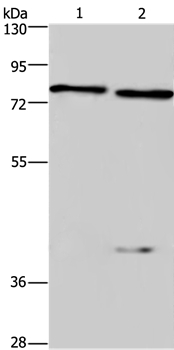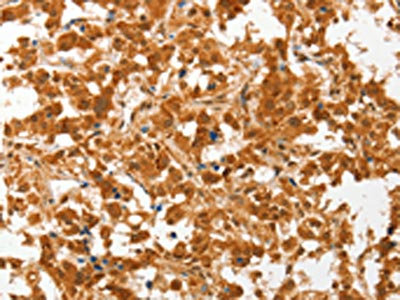Rabbit anti Human Sphingomyelin Phosphodiesterase 3
X2360P
ApplicationsWestern Blot
Product group Antibodies
ReactivityHuman
TargetCERT1
Overview
- SupplierNordic-MUbio
- Product NameRabbit anti Human Sphingomyelin Phosphodiesterase 3
- Delivery Days Customer7
- Application Supplier NoteAntibody can be used for Western blotting (1-5 microg/ml starting dilution). Optimal concentration should be evaluated by serial dilutions.
- ApplicationsWestern Blot
- Applications SupplierWestern Blotting;Western Blotting
- CertificationResearch Use Only
- ClonalityPolyclonal
- ConjugateUnconjugated
- Gene ID10087
- Target nameCERT1
- Target descriptionceramide transporter 1
- Target synonymsCERT, CERTL, COL4A3BP, GPBP, MRD34, NEDHSF, STARD11, ceramide transfer protein, StAR-related lipid transfer (START) domain containing 11, collagen type IV alpha 3 binding protein, collagen, type IV, alpha 3 (Goodpasture antigen) binding protein, lipid-transfer protein CERTL
- HostRabbit
- Protein IDQ53YV1
- Protein NameCeramide transfer protein
- Scientific DescriptionnSMase2; Neutral sphingomyelinase 2; EC 3.1.4.12
- Shelf life instructionSee expiration date on vial
- ReactivityHuman
- Reactivity SupplierHuman
- Reactivity Supplier NoteSynthetic peptide derived from human sphingomyelin phosphodiesterase 3
- UNSPSC12352203







